Nikon Coolpix P300 Review
Nikon Coolpix P300
Presented as a premium compact for discerning photographers, does Nikon's P300 live up to its billing?
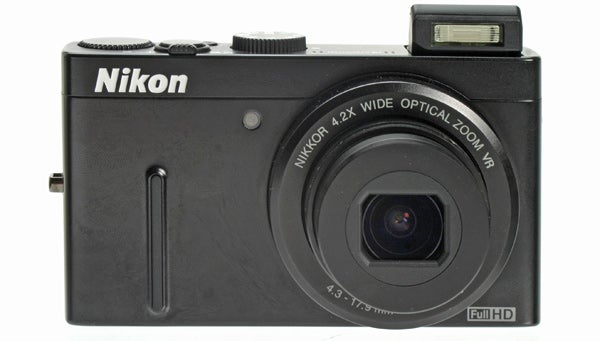
Verdict
Pros
- Stylish yet solid build
- Easy to use
- Delivers good image quality
- f/1.8 doesn't deliver any 'bokeh'
Cons
- No Raw shooting
- Fiddly zoom controls
Key Specifications
- Review Price: £250.00
- 12.2-megapixels
- 4.2x zoom (24-100mm)
- 1080p Full HD movie recording
- Manual shooting controls
- High-speed shooting
The Nikon P300 is an advanced compact that offers full manual controls alongside a fast f/1.8 zoom lens, 1080p Full HD movie recording abilities and advanced low-light shooting options. In addition, it also benefits from a 3inch, 920k-dot LCD monitor, dual thumb controls and part metal construction.
Aimed primarily at enthusiasts, the P300 is the sort of product that will
appeal to DSLR owners looking for a camera that they can keep close to
hand when they’re out and about where a larger model would be impractical.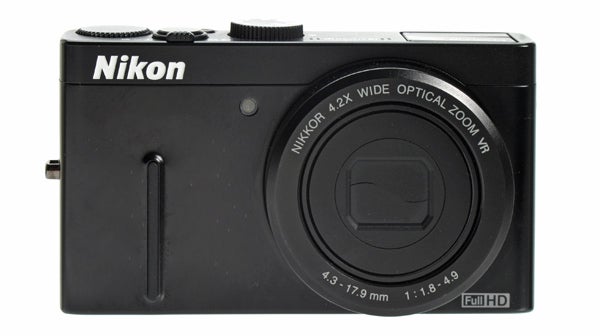
This is Nikon’s first attempt at an advanced digital compact, and as such the P300 finds itself up against some pretty stiff competition, with the likes of the Canon S95, Panasonic Lumix LX5 and Olympus XZ-1 among its main competitors.
All of these models have their various strengths and weaknesses over each other. For example, the P300 is the only camera that’s able to shoot 1080p Full HD movies, and yet both it and the S95 lack the hotshoe connection of the XZ-1 and LX5. One uniting factor common to all four models, however, is that they all sport fast lenses, with the P300 and
XZ-1 opening up to f/1.8 at their widest, with the S95 and LX5 close
behind on f/2. 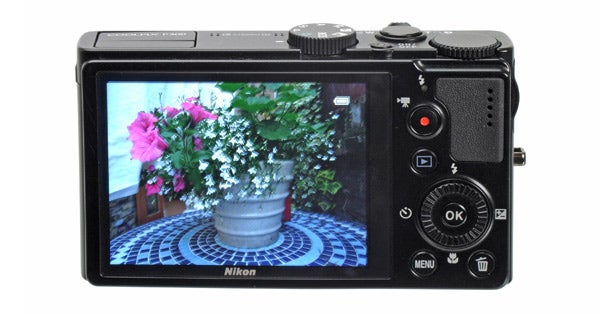
One small disadvantage the P300 does suffer from – on paper at least – is that it comes with a slightly smaller sensor than the other models; the S95 uses a 1/1.7-inch chip, while the LX5 and XZ-1 both take a 1/1.63-inch sensor. In contrast, the P300 uses a 1/2.3-inch sensor, although it is backside wired for better low-light performance. Does this put the P300 at a disadvantage, or can it equal or even surpass its rivals in other areas. Let’s take a closer look and find out.
The P300 is built around a 1/2.3-inch backlit CMOS sensor that offers 12.2-megapixels of effective resolution along with Nikon’s EXPEED C2 image processor that allows you to shoot at up to 8fps at full resolution. Sensitivity, meanwhile, ranges from ISO 160 to ISO 3200.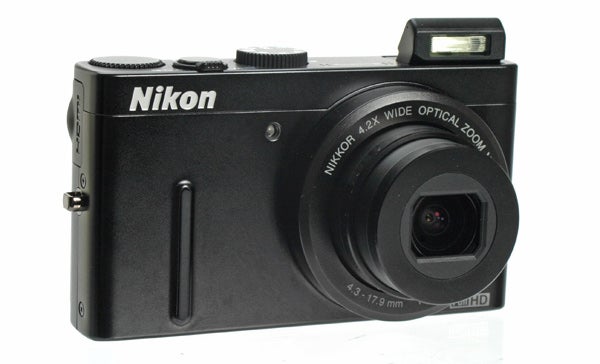
Used on its highest 12.2MP setting the P300 is capable of producing a maximum output of 4000 x 3000 pixels in the sensor’s native 4:3 aspect ratio. There are also options to record at 8MP, 5MP, 3MP, as well as PC-quality and VGA-quality. The ability to shoot at other aspects is limited to just 16:9 at 9MP.
The P300 comes with a 4.2x optical zoom that covers between 24mm and 100mm in 35mm terms. While this isn’t an especially wide focal range for a compact, it does compare favourably with its rivals – the Canon S95, for example, offers 28-105mm (3.8x), while the Lumix LX5 offers 24-90mm (also 3.8x). With a maximum aperture of f/1.8 the P300 is also one of the fastest compacts on the market.
Given that the P300 is presented as a premium compact that’s designed to appeal to photography enthusiasts it’s somewhat disappointing that the camera is JPEG only, with no way to record images as lossless Raw files. In complete contrast, both the Canon S95 and Lumix LX5 offer the ability to shoot in Raw.
In other areas, however, the P300 does offer DSLR-owning photography enthusiasts some familiar traits and features. For example the camera boasts the full compliment of creative DSLR shooting modes – Program, Aperture-priority, Shutter-priority and fully Manual, all of which will be second-nature to DSLR owners. 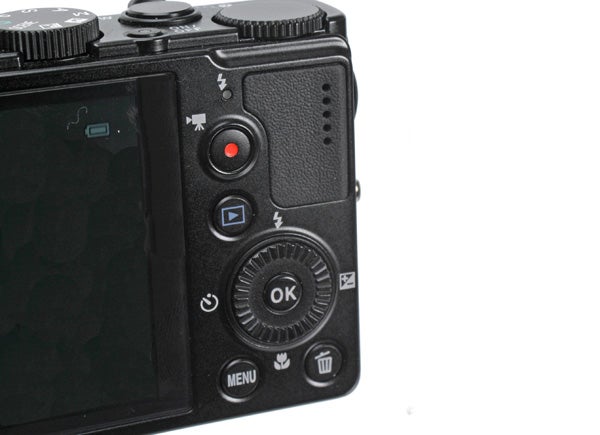
If, however, you’d prefer to let the camera take full control then the P300 offers a fully Automatic shooting mode, along with a selection of 17 individual Scene modes. Hidden away within these scene options is a Panorama mode that can be used to create 180-degree or 360-degree panoramas by simply panning the camera in a predetermined direction with the shutter button held down.
While we’re big fans of Sony’s Sweep Panorama technology, we’re also suitably impressed by Nikon’s reply to it. The P300 lacks the ability to shoot high-resolution panoramas that’s offered by some Sony compacts, but image quality remains pretty good, with almost seamless stitching too.
Rounding things off are a couple of interesting shooting modes: Night Landscape and Backlighting. Both work by taking multiple exposures and blending them together. Night Landscape does this in order to reduce noise, while Backlighting does so to simulate an increase in dynamic range. These are useful tools that can produce good results when used sensibly, although we’d advise caution with the Backlighting/HDR option as cranking it up to Level 3 generally leads to comically unnatural results.
Turning now to drive modes, in addition to the standard single-shot and 8fps continuous modes, the P300 also offers a number of high-speed modes: Best Shot Selector records up to 10 shots in succession and then automatically selects the sharpest while discarding the others.
Multi-shot, meanwhile, records 16 frames in super-quick succession and displays them all as single image. From here you can zoom in and crop the individual frame that you want, which can then be saved as a unique file. There are also 60fps and 120fps options, both of which record images at 1MP. As might be expected processing times for both are somewhat elongated compared to regular shooting modes. 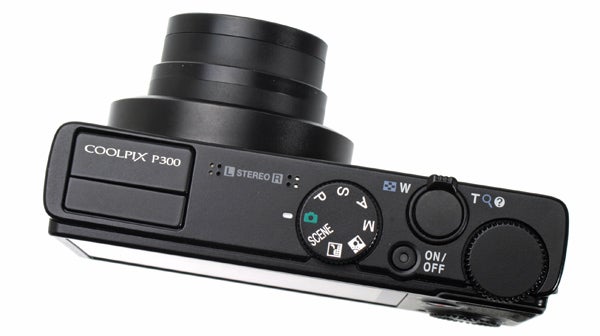
Movie recording is well catered for with the P300 able to record movies at a maximum 1920 x 1080p at 30fps. If required, movie quality can be stepped down to VGA quality, with all movies stored in the H.264 file format. Audio is recorded in stereo via two microphones on top of the camera, and AF can be set to either full-time or single. In addition, it’s also possible to operate the zoom while movies are being recorded.
The P300 is furnished with a number of in-camera editing tools that offer limited ability to alter your images without a computer. From simple all-in-one Quick Retouch commands to Dynamic Lighting and Skin Softening tools, the P300 also gets some basic digital filters, including fisheye and miniature effect. Oddly though, there’s a distinct lack of basic tools, such as crop or red-eye removal.
On the back, the P300 benefits from a fantastic high-resolution LCD monitor. Measuring three inches from corner to corner, the screen offers a 920k-dot resolution, which puts it right up there with the very best DSLR screens. The screen further benefits from an anti-reflective coating that enables you to see it even in bright, direct sunlight.
Befitting its status as a premium compact, the P300 is constructed from a mixture of metal and plastic. It’s not too weighty in the hand, but does feel reassuring solid. It’s a stylish contender too; design very much follows the minimalist tradition, with clean, straight lines and low-profile buttons and controls. If first impressions count then the P300 certainly impresses. 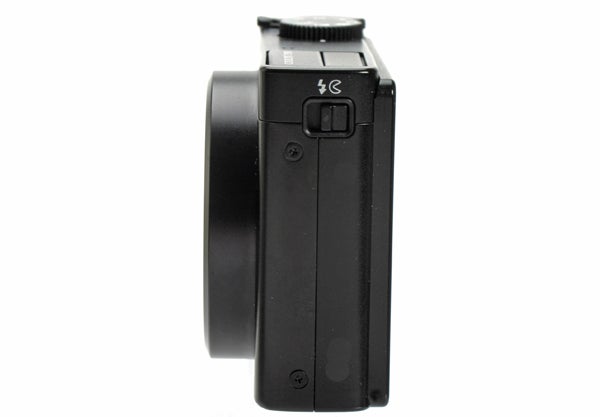
The only real downside to the minimalist approach taken by Nikon with the P300 is the lack of a proper finger grip. Yes, there is a small rubberised strip on the front of the camera, but it’s not really all that substantial and doesn’t offer all that much purchase. Thankfully, the moulded thumb-rest on the back of the camera is a little more pronounced and is rubberised too for added grip.
In use, the P300’s zoom control isn’t particularly smooth or responsive. Taking just under a second and a half to extend from 24mm-100mm, the spring-loaded rocker switch makes quite large focal jumps even when lightly feathered. In fact, we were able to count no more than 12 individual steps between the wideangle and telephoto extremes. This can make precise framing a bit of a chore and ideally we’d prefer to see a bit more precision from something billed as a premium model.
Elsewhere though, the P300 impresses with its ease of use. Given its minimalist design, there’s no button clutter to deal with, with all controls proving easy to reach and use. The ring around the directional-pad doubles up as a control wheel, and there’s also another control wheel subtly built into the top-plate of the camera.
Echoing the dual-wheel control of Nikon DSLRs, these two wheels act independently of each other when the camera is in fully manual mode, with the top thumb wheel controlling shutter speed and the D-pad wheel controlling aperture. It’s a neat and precise arrangement that makes shooting in fully manual mode much more intuitive. 
The menu system, in keeping with so many other Nikon cameras, is also really well laid out and easy to navigate. The options you are presented with are dependant on what shooting mode you are using, but common to all shooting modes is the simple act of pressing ‘Up’ or ‘Down’ on the D-pad to arrive at the setting you want to change from where you press Right to access a sub-menu to make your changes with the OK button confirming your selection and taking you back to shooting mode. If only all camera menus were this simple.
The P300 contains a 1050mAh Li-Ion battery that drains very quickly. In fact, using the camera non-stop we were only able to record around 150 images before the battery was exhausted. There’s no standalone battery charger in the box, although you do get a USB to mini USB lead that plugs directly into the base of the P300 to charge it via the mains supply or a PC. Be careful though, as the plastic cover guarding the mini USB port on the base of the camera looks like it’ll snap off before long.
We timed the P300’s start-up speed at a fraction under two seconds, which is perfectly reasonable for a compact camera. AF performance is smooth and quick too, with the camera able to go from near focus to infinity focus almost instantly in good light. In really poor light the P300 is able to emit an orange AF assist light to help find focus
Used in single-shot mode the P300 is able to record and process individual images in just over a second, with no upper limit on the number of shots you are unable to record. Switching to continuous drive allows you to snap at 8fps for up to seven consecutive shots, after which the camera will lock-up for around five seconds while it processes the images.
Overall image quality is very good. The little P300 is capable of producing images with a good degree of punch, strong contrast and pleasing colour. The lens is able to deliver impressive levels of sharpness, with good levels of detail too. 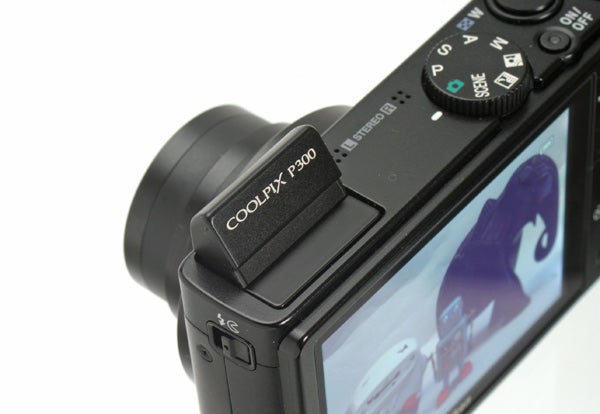
Be warned in advance though, that while the f/1.8 lens is certainly fast, you won’t be able to use it to produce the kind of out-of-focus ‘bokeh’ effect that DSLRs are able to produce when used with a fast lens set to a large aperture. Yes, you will be able to throw backgrounds out of focus, but not to the same extremes. See the examples on the Sample Images: General Images page for some real-world examples of what can be achieved from f/1.8.
Still, while the out-of-focus blur isn’t quite as pronounced as we’d hoped it might be, the P300’s lens remains capable of producing sharp edges while delivering good levels of detail too, especially when the camera is being used on its base ISO or close to it. Benefitting from lens-based image stabilisation, it’s possible to use the zoom at its maximum telephoto extension and get sharp handheld shots at lower shutter speeds than would otherwise be possible.
The lens also does a good job of keeping chromatic aberrations to a minimum and while there is some evidence of purple fringing on high-contrast borders, it’s not so pronounced as to be regularly troublesome.
Used in Matrix mode, metering process accurate, although when faced with a high-contrast scene there is a tendency for the camera to preserve shadow detail at the expense of blown highlights. You can, of course, move the camera around and use the camera in single-point AF point to find a compromise meter reading, or apply some compensation exposure, however as with the vast majority of small-sensor compact cameras the dynamic range isn’t all that high, so you can expect to have to make a choice between shadows or highlights when faced with a high-contrast scene.
One thing we rather like about the EV Compensation control is how it also allows you to change the Hue and Vividness settings. This basically allows you to inject a bit more vibrancy into muted subjects and flat-light days, or deliberately change the colour temperature. Used on a neutral setting we found the P300 to deliver pleasingly accurate colour that, while erring towards vibrant side of neutral, doesn’t over-egg things to become vivid, at least not without prior prompting.
We found the P300 to perform fairly well in low-light situations where high ISO settings were required. While images shot at the maximum setting of ISO 3200 show a marked deterioration in quality, with soft edges, mushy detail and diluted colour, the mid-to-high ISO settings of 400 to 1600 perform quite well, keeping images relatively sharp while maintaining true colour
VERDICT
The P300 is a likeable and highly stylish premium compact that’s easy to use and capable of producing good results. While the 4.2x zoom range is a bit limited we do like the f/1.8 lens, even if it can’t produce the kind of defocused ‘bokeh’ to rival DSLR lenses. In addition, the P300’s low-light, high-speed and multiple-exposure shooting modes all have their uses and are capable of good results when used with due care. That said, it does lose points for not being able to record lossless Raw images. Ideally, we’d liked to have seen smoother and more precise zoom controls too, along with a wider choice of aspect ratios. Overall though, if you’re on the lookout for a stylish compact with DSLR-like control and some interesting shooting features, the P300 deserves to be on your shortlist.

The full ISO test scene

As this 100% crop shows ISO 160 is sharp and noise-free

At ISO 200 the image is still crisp and noise-free

At ISO 400 the first signs of noise have begun to creep in, although images remain perfectly usable

At ISO 800 images are notably softer when viewed at 100%, although again remain perfectly usable at smaller image sizes

By ISO 1600 noise has become much more noticeable at larger image sizes

The top ISO setting of 3200 produces noisy, soft images

ISO 400

ISO 800

ISO 1600

ISO 3200

The P300 can produce bold, vibrant colours and plenty of contrast

The 4.2x optical zoom lens produces sharp images too

Although sadly the f/1.8 setting doesn’t produce any bokeh-like blur

Try as we might, we just couldn’t make the background an indiscriminate blur

For a compact camera, detail is well resolved throughout the frame

The P300 lends itself well to street photography

Although it can also produce colourful still-life images

It’s really easy to get good results with the 180-degree ‘Easy’ Panorama feature
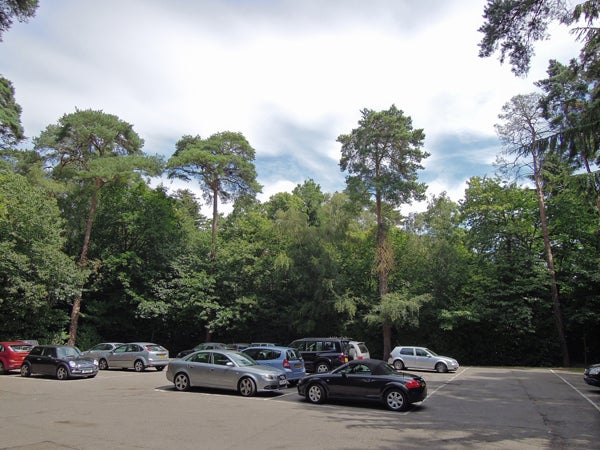
Although you do need to take care not to over-egg the HDR settings
Trusted Score
Score in detail
-
Value 8
-
Design & Features 8
-
Image Quality 8
-
Build Quality 8
Features
| Camera type | Digital Compact, Digital SLR |
| Megapixels (Megapixel) | 12.2 Megapixel |
| Optical Zoom (Times) | 4.2x |
| Image Sensor | 1/2.3in backside-illuminated CMOS |
| Optical focal length | 24-100mm |
| Shutter speed | 8-1/2000sec |
| Auto focus | 9-point contrast detect system: Auto, Centre, User-controlled, Face-detection, Tracking |
| Manual focus | No |
| Max output resolution | 4000 x 3000 pixels |
| Other resolutions | 8MP, 5MP, 3MP, PC-quality, VGA-quality |
| Focus range | 3cm (macro) to 30cm |
| Exposure control | PASM, Auto, Backlighting, Night Mode, 17 Scene |
| Exposure metering | Multi, Center-weighted |
| Exposure compensation | ±2 EV (at 1/3 EV steps) |
| Image Stabilisation | Yes, lens-based |
| ISO settings | 160-3200 |
| LCD Monitor | 3-inch, 921k-dot |
| Viewfinder | No |
| Flash range | 6.5m |
| Flash modes | Auto, On, Off, Red-Eye |
| White balance modes | Auto, Daylight, Incandescent, Flourescent, Cloudy, Flash |
| Drive modes | Single-shot, Continuous, Best Shot Slector, Multi-shot-16, High-speed 120fps, High-speed 60fps |
| Image formats | JPEG |
| Picture adjustments | Quick retouch, D-Lighting, Skin soften, 4x Filters, Rotate |
| Video (max res/format) | 1920 x 1080p |
| Movie length | N/A |
| Self timer | 2sec, 10sec |
| Memory card slot | SD/SDHC |
| Supplied memory | 90MB |
| Batteries supplied | Yes, Li-Ion |
| Charger supplied | No, charges from USB lead |
| A/V output | Yes |
| Charging/Computer Connection | Yes |
| HDMI | Yes |
| AV Out | Yes |
| Manual | Yes |
Physical Specifications
| Dimensions Width (Millimeter) | 103mm |
| Depth (Millimeter) | 32mm |
| Length (Millimeter) | 58.3mm |
| Weight (body only) (Kilogram) | 180kg |

